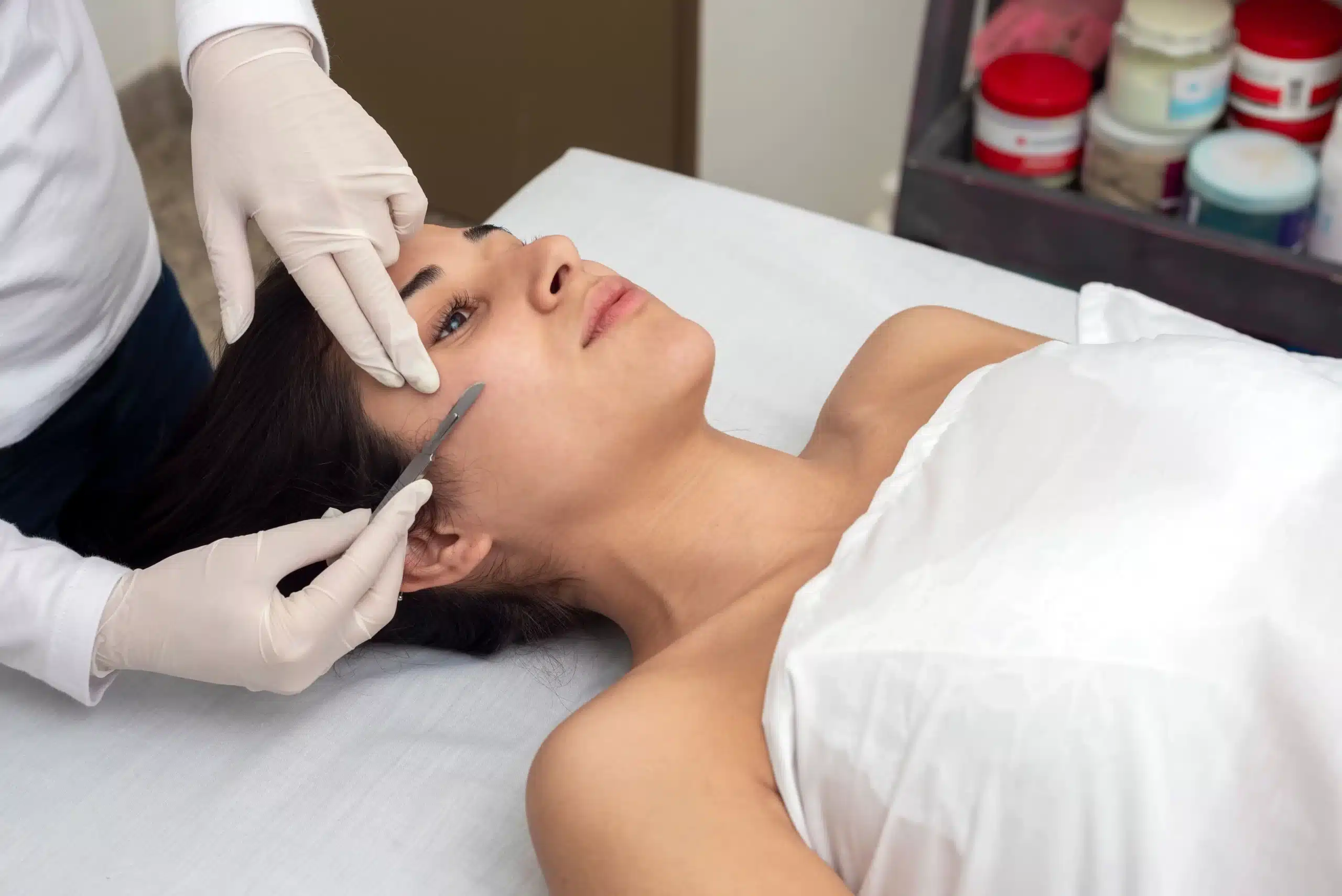Dermaplaning

In the ever-evolving world of skincare and cosmetic treatments, dermaplaning has emerged as a popular method for achieving a radiant, smooth complexion. This simple yet effective treatment involves the use of a specialized sterile single-use surgical scalpel to gently scrape away the top layers of dead skin and fine vellus hair, known as “peach fuzz,” from the face. Dermaplaning offers an immediate improvement in skin texture and tone, providing a perfect canvas for skincare and makeup application and helping products penetrate more effectively.
Understanding Dermaplaning
Dermaplaning is a non-invasive, exfoliating treatment performed by a licensed professional. Unlike chemical peels or microdermabrasion, dermaplaning uses a manual approach to remove surface debris, enhancing the skin’s natural radiance. The treatment is safe for most skin types and particularly beneficial for those with dry or rough skin texture, and a lot of light fine peach fuzz.
The Benefits of Dermaplaning
The immediate and noticeable improvement in skin texture, smoothness and appearance is one of the primary benefits of dermaplaning. However, the advantages extend beyond just the aesthetic:
- Enhanced Product Efficacy: By removing the outermost layer of dead skin, dermaplaning allows for better absorption of skincare products, making them more effective.
- Smooth Makeup Application: The removal of peach fuzz and dead skin cells results in a smoother surface, making makeup application flawless.
- Brighter Complexion: Dermaplaning helps to reveal a brighter, more youthful complexion by eliminating dead skin cells that can make the skin look dull.
- No Downtime: This non-invasive treatment requires no recovery time, making it an ideal option for those with a busy lifestyle.
The Dermaplaning Procedure
A dermaplaning session typically lasts between 20 to 30 minutes. Here’s a brief overview of what to expect:
- Cleansing: The skin should be without any oils, dirt, and makeup.
- Dermaplaning: Using a sterile, surgical-grade scalpel held at a 45-degree angle, the esthetician or dermatologist gently scrapes the surface of the skin, removing dead skin cells and vellus hair.
- Soothing: After dermaplaning, a soothing serum or moisturizer is applied to hydrate and calm the skin. A mild chemical peel may also be applied to enhance the results.
- Sun Protection: Finally, sunscreen is applied to protect the fresh, exposed skin from UV damage.
Aftercare and Considerations
Following a dermaplaning treatment, it’s crucial to protect the skin from sun exposure to prevent pigmentation issues. Using a broad-spectrum sunscreen and maintaining a gentle skincare routine are advised. While dermaplaning is suitable for most skin types, those with active acne, eczema, or rosacea should avoid the treatment, as it can irritate these conditions.
Potential Side Effects
Dermaplaning is generally safe when performed by a qualified professional. However, some individuals may experience slight redness or feel a tingling sensation immediately after the treatment, which typically subsides within a few hours. The risk of side effects can be minimized by following the aftercare instructions provided by your skincare specialist.
To summarize, Dermaplaning is a simple, effective method for achieving a smoother, more radiant complexion. By removing the outermost layers of dead skin and fine hairs, it not only improves the skin’s appearance but also enhances the efficacy of skincare products. With minimal risk and no downtime, dermaplaning is an excellent option for those looking to refresh their skin without undergoing more invasive procedures. As with any cosmetic treatment, consult with a licensed professional to determine if dermaplaning is suitable for your skin type and concerns. Please call Anara Medspa 732-777-9577 to schedule your appointment.

